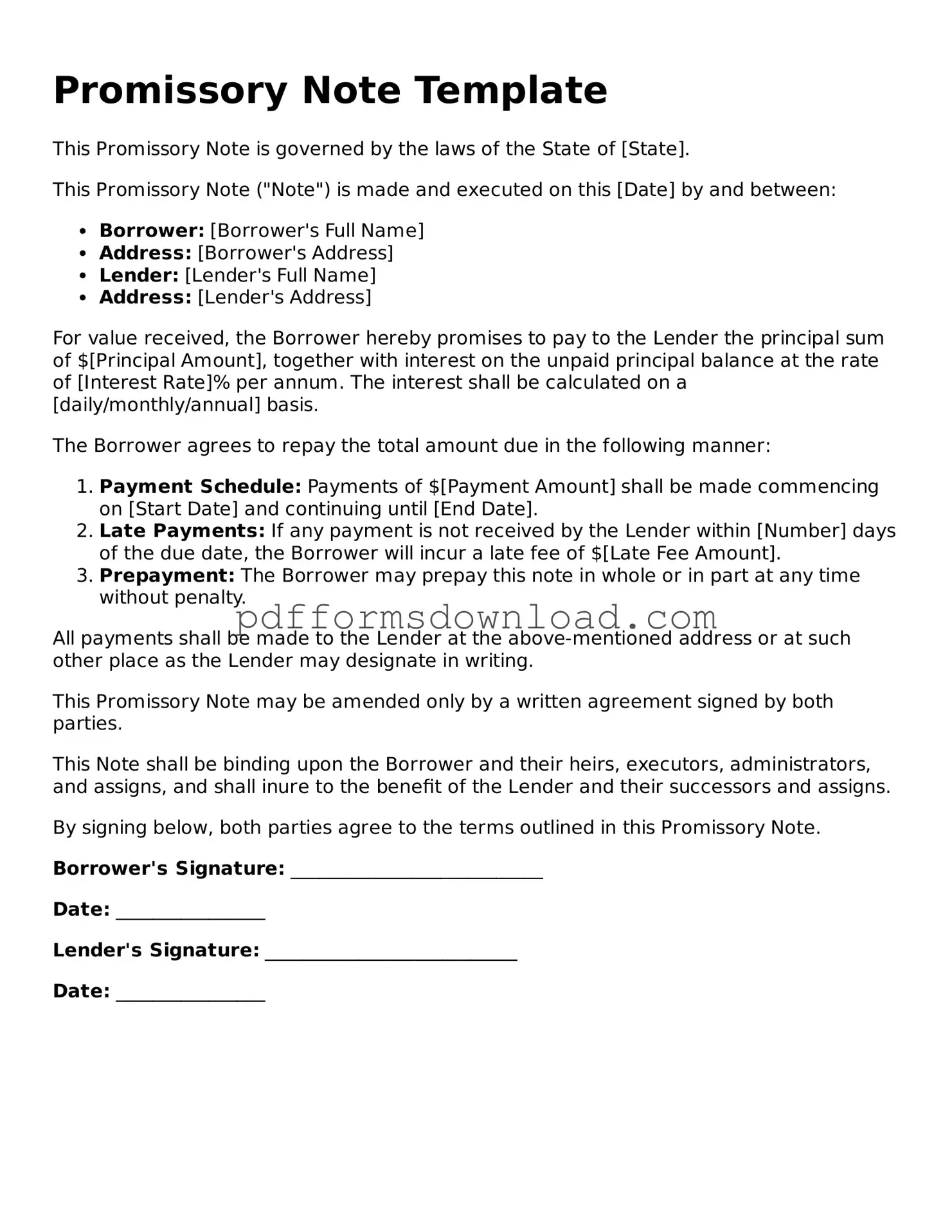What is a Promissory Note?
A Promissory Note is a written promise to pay a specific amount of money to a designated person or entity at a specified time. It outlines the terms of the loan, including the principal amount, interest rate, and payment schedule. This document serves as a legal record of the agreement between the borrower and the lender.
Who uses a Promissory Note?
Individuals and businesses commonly use Promissory Notes. They are often utilized in personal loans, business loans, and real estate transactions. Anyone who lends money or extends credit may require a Promissory Note to formalize the arrangement and protect their interests.
What are the key components of a Promissory Note?
A typical Promissory Note includes the following key components: the names of the borrower and lender, the principal amount, the interest rate, the repayment schedule, and any late fees or penalties. It may also specify whether the loan is secured or unsecured and include provisions for default.
Is a Promissory Note legally binding?
Yes, a properly executed Promissory Note is legally binding. Once signed by both parties, it creates an enforceable obligation for the borrower to repay the loan according to the agreed-upon terms. If the borrower fails to repay, the lender can take legal action to recover the owed amount.
Do I need a lawyer to create a Promissory Note?
While it is not mandatory to hire a lawyer, consulting one can be beneficial. A lawyer can ensure that the Promissory Note meets all legal requirements and adequately protects your interests. However, many templates are available online for those who prefer to draft their own notes.
Can I modify a Promissory Note after it has been signed?
Yes, you can modify a Promissory Note, but both parties must agree to the changes. It is best to create a written amendment that outlines the specific modifications. This document should be signed by both the borrower and the lender to maintain its enforceability.
What happens if the borrower defaults on the Promissory Note?
If the borrower defaults, the lender has several options. They may choose to negotiate a new payment plan, pursue legal action to recover the owed amount, or initiate foreclosure if the loan is secured by collateral. The specific actions taken will depend on the terms outlined in the Promissory Note and applicable state laws.
